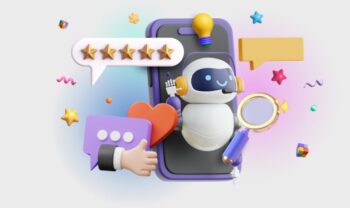When deciding to implement a chatbot for WhatsApp, one of the most important technological challenges for Small and Medium Enterprises (SMEs) in Latin America is choosing between an Artificial Intelligence (AI)-powered chatbot and a flow-based (or rules-based) one. Both options seek to automate communication, but their approaches, capabilities, and ultimately, the value they bring to the business are distinct. This guide will break down the pros and cons of each type, explore when it's more convenient to use one or the other, and highlight how advanced platforms like Aurora Inbox are empowering AI chatbots to deliver superior solutions.
Understanding the Basics: Flow Chatbots vs. AI Chatbots
Before analyzing which one is best for your business, it is essential to understand how each one works:
Flow-Based (or Rule-Based) Chatbots
These chatbots operate following a predefined script, similar to a decision tree. User interaction is guided through menus with options, buttons, or by recognizing very specific keywords. If the user deviates from the designed flow or uses unprogrammed terminology, the chatbot will generally be unable to respond appropriately and will offer generic options or request intervention from a human agent. They are similar to an interactive voice response (IVR) system, but in a chat format.
Chatbots with Artificial Intelligence (AI)
These chatbots, like those powered by Aurora Inbox, use advanced technologies such as Natural Language Processing (NLP) and Machine Learning. NLP allows them to understand the intent behind the user's words, even if the question is phrased in a variety of ways, with grammatical errors or using local slang. Machine learning allows them to improve their performance over time, learning from each interaction to become more accurate and efficient. They seek to simulate a more human and contextual conversation.
Pros and Cons: A Closer Look
Flow-Based Chatbots
Pros:
- Lower Initial Cost and Speed of Implementation: They are generally cheaper and faster to set up for very simple, well-defined tasks, as they do not require training AI models.
- Total Control and Predictability: Conversations follow strictly defined paths, giving you complete control over the interaction and making the bot's behavior completely predictable.
- Sufficient for Very Specific Tasks: For extremely limited functionality, such as offering a basic menu of options or answering 2-3 very specific questions, they may be adequate.
Cons:
- Rigid and Limited User Experience: They can be frustrating for users if their needs don't fit perfectly into the flow. The conversation feels unnatural.
- Inability to Handle Unexpected Queries: They cannot understand or answer questions that are not explicitly programmed.
- Complex Scalability and Maintenance: As your business grows and needs change, adding new options or modifying workflows can become very time-consuming and error-prone.
- They Don't Learn or Improve: Their performance is static; they don't adapt or improve over time or with the volume of interactions.
- Little or No Understanding of Context: They don't tend to remember previous interactions within the same conversation unless explicitly designed into the flow.
Chatbots with Artificial Intelligence
Pros:
- Higher Natural Language Understanding: They understand intent, context, synonyms, typos, and linguistic variations, including Latin American Spanish.
- Smooth and Personalized User Experience: They enable more natural, human-like conversations and can personalize responses based on context and, if integrated with CRM, customer history.
- High Flexibility and Adaptability: They can handle a much wider range of queries, including open-ended questions and topics not explicitly anticipated, and they know when to escalate to a human more intelligently.
- Continuous Learning and Automatic Improvement: Thanks to machine learning, they become more precise and efficient with each interaction, adapting to changing needs.
- Greater Capacity for Automation of Complex Tasks: They can perform more sophisticated tasks, such as sentiment analysis, personalized recommendations, or deep integrations with other systems.
- Easier Scalability of Knowledge: Adding new information or capabilities is often faster than redesigning multiple flows.
Cons:
- Higher Initial Cost and Implementation Time: Developing and, especially, initially training an AI model can require a larger investment of time and money compared to a simple workflow bot.
- Requires Data for Training: For AI to function well, it needs to be fed with relevant data (FAQs, chat transcripts, documents). The quality of this data is crucial.
- Possible “Black Box”: In some highly complex AI models, it can be more difficult to understand exactly why the bot gave a specific response, although modern platforms aim to provide greater transparency.
When to Use Each Type of Chatbot?
Ideal Scenarios for Flow-Based Chatbots:
- Extremely Limited Budget and Very Basic Needs: If you only need to answer a handful of very predictable questions or guide through 2-3 options.
- Very Specific and Short-Term Marketing Campaigns: Where the interaction flow is simple and not much variation is expected.
- Simple Internal Processes: As a quick survey with closed options for employees.
Ideal Scenarios for Chatbots with Artificial Intelligence:
- Comprehensive Customer Service: When looking to provide comprehensive support, answer a wide variety of questions, and resolve issues.
- Sophisticated Lead Generation and Qualification: To understand the needs of prospects in depth and segment them effectively.
- Personalization of the Customer Experience: If you want to offer interactions tailored to the user's history and behavior.
- Businesses with a Broad or Complex Product/Service Catalog: Where customers may have many different questions.
- Companies Seeking Scalability and Continuous Improvement: If the goal is a solution that grows and adapts with the business.
- Competitive Markets Where Customer Experience Is a Key Differentiator: As is the case with many SMEs in Latin America.
The Power of Aurora Inbox: AI Focused on the Needs of Latin America
At Aurora Inbox, we leverage the power of Artificial Intelligence to transform SMB communication in Latin America. Our platform is designed to:
- Facilitate AI Training: With intuitive tools to upload your knowledge base (FAQs, website, documents) and train your virtual agent in Spanish, understanding its regional nuances.
- Offer an Integrated CRM: So your AI-powered chatbot can access customer context and personalize interactions, taking service to the next level.
- Combining the Best of Both Worlds (Hybrid Approach): While AI is our strength, we also enable the creation of structured workflows that can be enhanced by bot intelligence, offering flexibility.
- Provide Detailed Analytics: So you can see how your AI chatbot is learning and improving, and where you can optimize it further.
We believe that AI is no longer a luxury for large corporations, but an accessible and fundamental tool for SMEs in Latin America to compete and prosper.
Making the Right Decision for Your Business
The choice between a flow-based chatbot and an AI-powered one will depend on your specific goals, your budget, the complexity of the interactions you need to handle, and your long-term vision. While a flow-based chatbot may seem like a quick and cost-effective solution for specific problems, an AI-powered chatbot represents a more strategic investment that can generate significantly greater value in terms of customer satisfaction, operational efficiency, and adaptability.
For most SMBs in Latin America seeking sustainable growth and a competitive advantage through exceptional customer service on WhatsApp, an AI-powered chatbot, like those developed with Aurora Inbox, is often the most convenient option with the highest return potential.
Bottom Line: Invest in Intelligence for a Brighter Future on WhatsApp
The choice between an AI chatbot and a flow-based chatbot for WhatsApp isn't just a technological choice, but a strategic one that will impact how your SMB interacts with its customers and positions itself in the Latin American market. While flow-based chatbots offer simplicity for basic tasks, AI chatbots open up a world of possibilities for richer, more personalized, and more efficient conversations. When you consider your long-term goals and the type of experience you want to offer, platforms like Aurora Inbox give you the power of AI to build stronger relationships with your customers and take your business to the next level within the WhatsApp ecosystem.



